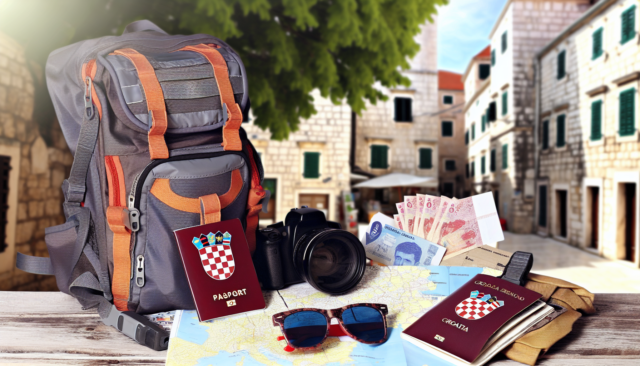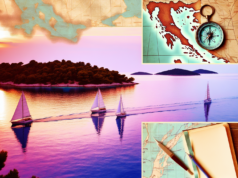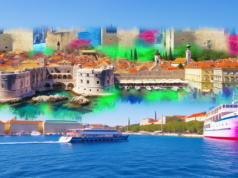
Croatia, a jewel of the Adriatic Sea, boasts stunning coastlines, rich history, and vibrant culture. Whether you’re wandering through medieval towns, relaxing on the beach, or exploring national parks, Croatia is a destination that captivates travelers from all corners of the globe. If you’re planning a trip to this enchanting country, here are some essential tips to ensure a smooth and enjoyable experience.
1. Best Time to Visit
While Croatia can be visited year-round, the best time for most travelers is during the late spring (May to June) and early fall (September to October). During these months, you’ll enjoy pleasant weather, fewer crowds, and lower prices than in the peak summer months (July and August). If you’re looking to experience Croatia’s famous festivals, plan your visit around events such as the Dubrovnik Summer Festival in July or the Sinjska Alka in August.
2. Getting There and Around
Croatia is well-connected by air, primarily through its capital, Zagreb, and popular coastal cities like Split and Dubrovnik. Once you’re in the country, transportation options include buses, ferries, trains, and domestic flights. Buses are a convenient way to travel between cities, while ferries are ideal for exploring the stunning Dalmatian islands. Renting a car offers you the flexibility to explore off-the-beaten-path locations, but be mindful of parking regulations in cities.
3. Currency and Payments
Croatia uses the Croatian Kuna (HRK) as its official currency. While many businesses accept credit cards, especially in larger cities and tourist areas, it’s advisable to carry some cash for smaller purchases or in rural areas. ATMs are widely available, and you can find currency exchange offices in major towns. Be aware of any service fees if you’re withdrawing cash abroad.
4. Language and Communication
Croatian is the official language, but English is widely spoken, particularly in tourist areas, hotels, and restaurants. Learning a few basic Croatian phrases can go a long way in enhancing your travel experience and connecting with locals. Simple greetings like "Dobar dan" (Good day) and "Hvala" (Thank you) are appreciated.
5. Cultural Etiquette
Respect for local customs is essential when visiting Croatia. While the country is generally welcoming to tourists, it’s important to be mindful of cultural norms. Dress modestly when visiting churches and religious sites, and be aware of local dining etiquette. Tipping is customary in restaurants (around 10%), and rounding up the bill is also appreciated.
6. Cuisine to Try
Croatian cuisine is diverse and regional, reflecting the nation’s geography and cultural influences. Be sure to try traditional dishes like Peka (meat and vegetables cooked under a bell), fresh seafood along the coast, and hearty stews like Čobanac. Don’t forget to sample local wines, particularly from regions like Istria and Dalmatia.
7. Top Destinations
Croatia is filled with must-see destinations. Here are a few highlights:
-
Dubrovnik: The iconic "Pearl of the Adriatic," known for its well-preserved medieval walls and stunning Old Town, which is a UNESCO World Heritage site.
-
Split: Home to Diocletian’s Palace, a Roman architectural masterpiece, and a vibrant waterfront promenade.
-
Hvar: This sun-kissed island is famous for its nightlife, lavender fields, and beautiful beaches.
-
Plitvice Lakes National Park: A UNESCO site renowned for its cascading lakes and lush forests, perfect for hiking.
- Zagreb: The vibrant capital city, featuring a mix of historic and modern architecture, lively cafes, and galleries.
8. Safety and Health
Croatia is generally a safe country for travelers. Petty crime, such as pickpocketing, can occur in crowded tourist areas, so stay alert and secure your belongings. Tap water is safe to drink in most areas, but it’s wise to check with locals or signage when in doubt. Travel insurance is recommended to cover unexpected situations.
9. Connectivity
While major cities and tourist areas offer strong Wi-Fi coverage, rural areas may have limited access. Consider getting a local SIM card for better connectivity, especially if you plan to explore remote areas where Wi-Fi may be scarce.
10. Pack Accordingly
Croatia’s climate varies, so pack according to the season and your itinerary. Summer clothes are essential for beach visits, while if you’re visiting in winter, bring warm layers as temperatures can drop. Don’t forget a swimsuit, comfortable walking shoes, and a reusable water bottle to stay hydrated while exploring.
Conclusion
With an array of breathtaking landscapes, rich history, and hospitable locals, Croatia is a destination that will leave you longing for more. By planning ahead and being mindful of local customs and culture, your trip to this Mediterranean paradise can be a memorable and seamless adventure. So pack your bags and get ready to explore the stunning beauty of Croatia!













